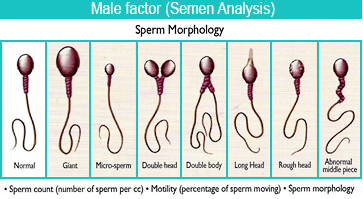
:max_bytes(150000):strip_icc()/azoospermia-overview-4178823-5c5db5ffc9e77c00010a486a.png)
To preserve the number of chromosomes in the offspring – which differs between species – one of each gamete must have half the usual number of chromosomes present in other body cells. This is the cornerstone of sexual reproduction and involves the two gametes both contributing half the normal set of chromosomes ( haploid) to result in a chromosomally normal ( diploid) zygote. Spermatogenesis produces mature male gametes, commonly called sperm but more specifically known as spermatozoa, which are able to fertilize the counterpart female gamete, the oocyte, during conception to produce a single-celled individual known as a zygote. A group of cells with different maturation states that are being generated at the same time is called a spermatogenic wave. The division happens asynchronically if the tube is cut transversally one could observe different maturation states. Spermatogenesis starts in the bottom part of seminiferous tubes and, progressively, cells go deeper into tubes and moving along it until mature spermatozoa reaches the lumen, where mature spermatozoa are deposited. It starts during puberty and usually continues uninterrupted until death, although a slight decrease can be discerned in the quantity of produced sperm with increase in age (see Male infertility). DNA methylation and histone modification have been implicated in the regulation of this process. Spermatogenesis is highly dependent upon optimal conditions for the process to occur correctly, and is essential for sexual reproduction. In mammals it occurs in the seminiferous tubules of the male testes in a stepwise fashion. Thus, spermatogenesis is the male version of gametogenesis, of which the female equivalent is oogenesis. Spermatozoa are the mature male gametes in many sexually reproducing organisms. Thus, the primary spermatocyte gives rise to two cells, the secondary spermatocytes, and the two secondary spermatocytes by their subdivision produce four spermatozoa and four haploid cells.

These develop into mature spermatozoa, also known as sperm cells. The spermatids are transformed into spermatozoa (sperm) by the process of spermiogenesis. The primary spermatocyte divides meiotically ( Meiosis I) into two secondary spermatocytes each secondary spermatocyte divides into two equal haploid spermatids by Meiosis II. Type A cells replenish the stem cells, and type B cells differentiate into primary spermatocytes. The mitotic division of these produces two types of cells. These cells are called spermatogonial stem cells. This process starts with the mitotic division of the stem cells located close to the basement membrane of the tubules. Spermatogenesis is the process by which haploid spermatozoa develop from germ cells in the seminiferous tubules of the testis. High-power view of a seminiferous tubule with normal spermatogenesis.


 0 kommentar(er)
0 kommentar(er)
